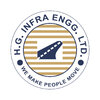Filter interviews by
Varrsana Ispat Interview Questions and Answers
Varrsana Ispat Interview Experiences
4 interviews found
(2 Questions)
- Q1. Power plant accessories and equipment
- Q2. Material handling system
Interview Preparation Tips
I applied via Walk-in
(2 Questions)
- Q1. Salary discussions
- Q2. Expection salary
Interview Preparation Tips
I appeared for an interview before Jun 2024, where I was asked the following questions.
- Q1. Can you explain the working of a flow meter?
- Q2. Explain distributed control system?
I applied via Referral and was interviewed before Jan 2021. There were 3 interview rounds.
Interview Questionnaire
4 Questions
- Q1. Power Plant Operation Regarding.
- Q2. Emergencies & Black out condition.
- Q3. Roles & responsibilities of engineer in power plant
- Q4. Duty of shift incharge & Desk engineer
Interview Preparation Tips
Top trending discussions






Interview questions from similar companies

I applied via Recruitment Consultant and was interviewed in Sep 2019. There were 3 interview rounds.
Interview Questionnaire
2 Questions
- Q1. About my previous experience, and my scope of work?
- Q2. Areas of strengths and areas need to develop
Interview Preparation Tips
Thanks and Regards
Rahman

Interview Questionnaire
1 Question
- Q1. Technical question

I applied via Campus Placement and was interviewed before Mar 2020. There were 4 interview rounds.
Interview Questionnaire
1 Question
- Q1. What is the most challenging situation you have been through in your career?
- Ans.
I faced a critical project deadline with unexpected technical challenges, requiring quick problem-solving and team collaboration.
Led a team during a major software deployment that faced unexpected bugs just days before launch.
Implemented a rapid response strategy, organizing daily stand-ups to address issues in real-time.
Collaborated with cross-functional teams to identify root causes and develop effective solutions.
Su...
Interview Preparation Tips

I applied via Naukri.com and was interviewed before Sep 2020. There was 1 interview round.
Interview Questionnaire
3 Questions
- Q1. About pipeline
- Q2. Hydrotest procedure
- Ans.
Hydrotest procedure is a process of testing the strength and integrity of a pressure vessel or pipeline by filling it with water and pressurizing it.
The vessel or pipeline is filled with water and pressurized to a specified level
The pressure is held for a specified amount of time to check for leaks or deformations
The test is usually performed before commissioning or after repairs
The test pressure and duration are deter...
- Q3. HDD procedure
- Ans.
HDD procedure refers to the process of installing and configuring a hard disk drive in a computer system.
Ensure the HDD is compatible with the computer system
Physically install the HDD in the appropriate bay
Connect the necessary cables to the HDD and motherboard
Configure the HDD in the BIOS settings
Format the HDD and install the operating system
Test the HDD for proper functionality
Interview Preparation Tips
Skills evaluated in this interview

I applied via Recruitment Consultant and was interviewed before Oct 2020. There was 1 interview round.
Interview Questionnaire
1 Question
- Q1. About the background
Interview Preparation Tips

I applied via Company Website and was interviewed before Apr 2020. There were 4 interview rounds.
Interview Questionnaire
2 Questions
- Q1. Load distribution under rigid and flexible footings,water tank design, steel foundation design
- Q2. Mix design of concrete, btech project
- Ans.
Mix design of concrete and BTech project
Mix design involves determining the proportions of cement, water, aggregates, and admixtures to achieve desired properties of concrete
Factors like strength, workability, durability, and cost are considered while designing the mix
BTech project can involve studying the effect of different mix designs on properties of concrete or developing a new mix design
Examples of BTech projects...
Interview Preparation Tips
Varrsana Ispat Interview FAQs
Tell us how to improve this page.
Varrsana Ispat Interviews By Designations
Interview Questions for Popular Designations
Overall Interview Experience Rating
based on 7 interview experiences
Difficulty level
Duration
Interview Questions from Similar Companies
Varrsana Ispat Reviews and Ratings
based on 85 reviews
Rating in categories
|
Assistant Manager
12
salaries
| ₹3.1 L/yr - ₹10 L/yr |
|
Engineer
10
salaries
| ₹2.4 L/yr - ₹4 L/yr |
|
Electrical Engineer
9
salaries
| ₹2.4 L/yr - ₹4.5 L/yr |
|
Executive Accountant
8
salaries
| ₹2.6 L/yr - ₹3.5 L/yr |
|
Mechanical Engineer
8
salaries
| ₹2.4 L/yr - ₹4.5 L/yr |

L&T Construction

Simplex Infrastructures

ITD Cementation India

Ashoka Buildcon
- Home >
- Interviews >
- Varrsana Ispat Interview Questions













